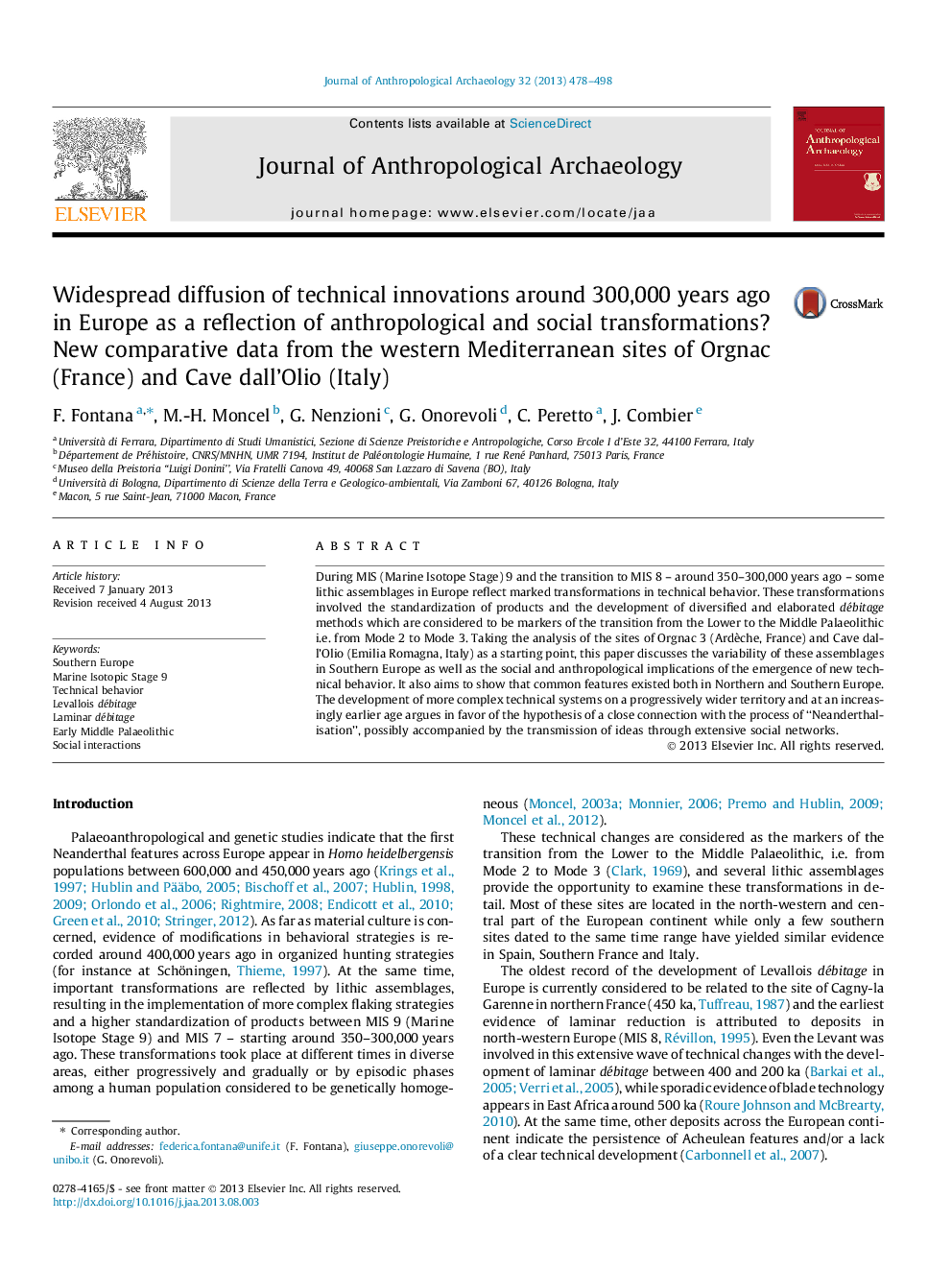| Article ID | Journal | Published Year | Pages | File Type |
|---|---|---|---|---|
| 10498707 | Journal of Anthropological Archaeology | 2013 | 21 Pages |
Abstract
During MIS (Marine Isotope Stage) 9 and the transition to MIS 8 - around 350-300,000 years ago - some lithic assemblages in Europe reflect marked transformations in technical behavior. These transformations involved the standardization of products and the development of diversified and elaborated débitage methods which are considered to be markers of the transition from the Lower to the Middle Palaeolithic i.e. from Mode 2 to Mode 3. Taking the analysis of the sites of Orgnac 3 (Ardèche, France) and Cave dall'Olio (Emilia Romagna, Italy) as a starting point, this paper discusses the variability of these assemblages in Southern Europe as well as the social and anthropological implications of the emergence of new technical behavior. It also aims to show that common features existed both in Northern and Southern Europe. The development of more complex technical systems on a progressively wider territory and at an increasingly earlier age argues in favor of the hypothesis of a close connection with the process of “Neanderthalisation”, possibly accompanied by the transmission of ideas through extensive social networks.
Related Topics
Social Sciences and Humanities
Arts and Humanities
History
Authors
F. Fontana, M.-H. Moncel, G. Nenzioni, G. Onorevoli, C. Peretto, J. Combier,
